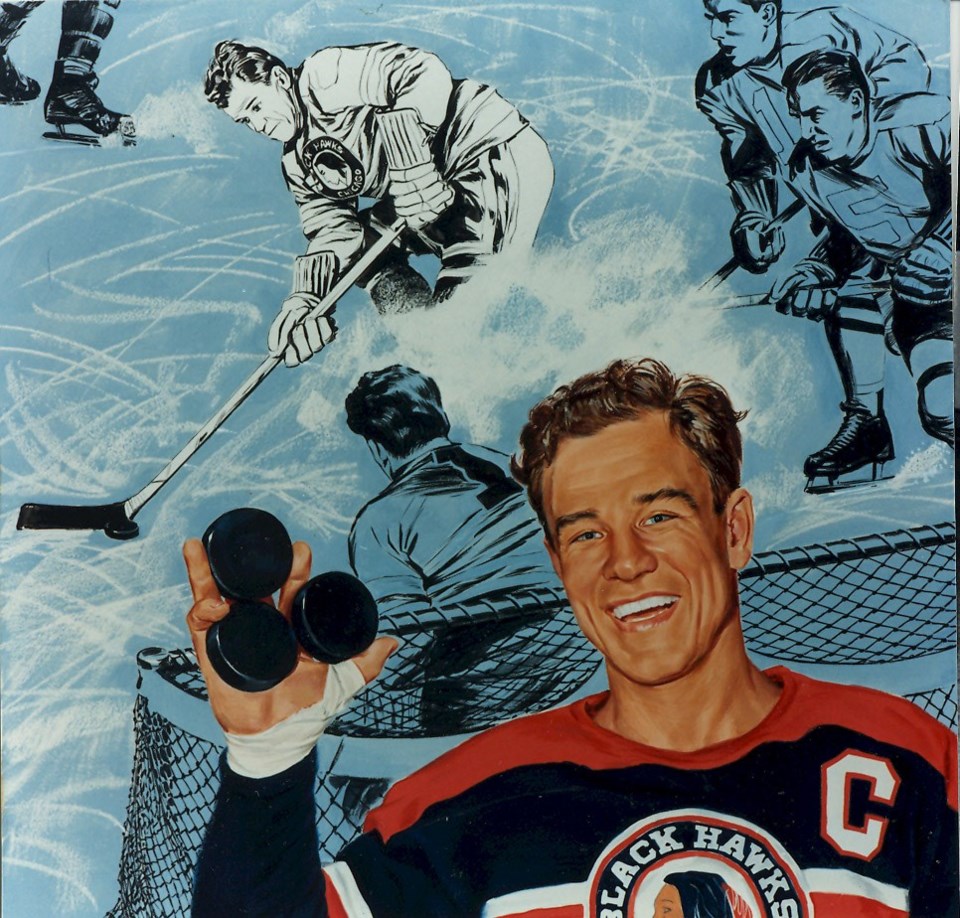YORKTON - You need to be a hockey fan of a certain age – most certainly a grey-haired one, or a bit of a hockey historian to know the name Bill Mosienko.
And, even historically he is usually best-remembered for a mere 21-seconds when he scored three goals in a game – setting the mark for the fastest hat trick in NHL history, a record that will never likely be challenged, but there is much more to Mosienko’s career.
The full story is told in a recent book Mosienko: The Man Who Caught Lightning In A Bottle by Ty Dilello from Great Plains Publications.
When I picked up the book I admit I knew about the three-goal record, and that Mosienko had been inducted into the Hockey Hall of Fame after a long career with the Chicago Black Hawks – 14 seasons – but he was retired from the NHL a half decade before I was born so I knew few details.
Dilello did a fine job of telling Mosienko’s story, from growing up in Winnipeg through his long career, to retiring back to the ‘Peg where he operated a bowling alley for years.
Dilello said he has always “been really passionate” about hockey, and as a journalist has written several books on the sport.
As he was researching the 28-year-old author became aware of Mosienko.
“I was kind of surprised something wasn’t already done on him,” he said in a recent interview with Yorkton This Week.
So Dilello took on the job undertaking “a deeper dive into his life . . . I sort of reached out to his family . . . They were helpful on every step.”
The Mosienko story is one that is more than just a hall of fame NHL career, said Dilello.
“He was such a great ambassador here in Manitoba for the sport,” he said.
That said, Mosienko did star in the NHL in a time of no helmets, six teams and lots of rough and tumble hockey.
How tough was it?
Well Dilello writes about it in the book where he included some of Mosienko’s own reflections.
“Early on, Jack Shewchuk of Boston pushed me into the boards, and I twisted my left ankle. I’ve missed quite a bit of playing time since then, too, with various injuries. In 1945-46, Bill Moe of the Rangers checked me, and I got torn ligaments in my knee. Later that year, Don Grosso of Detroit bumped me into the boards, which resulted in a shoulder separation.
“In the 1947 All-Star game, Jim Thomson of Toronto checked me into the boards, my skate caught, and I had a broken ankle. I also had a separation in my other shoulder; torn knee ligaments four times; a fractured toe; a fractured cheekbone – but I didn’t miss any playing time – and a fractured nose three times.
“Ted Lindsay and Elmer Lach were pretty handy with the stick. Howe plays for keeps. He’s brought up that way, and he stops at nothing to stop you. I played against Richard for many years, and he never did anything dirty to me. I never once saw him start anything, but they were on him all the time, and he just naturally blew up.”
While they only stayed together for two seasons, Mosienko was for a time part of one of – if not the greatest – line combinations of the era, forming the ‘Pony Line’ with Max and Doug Bentley from Delisle, Sask.
“The Bentleys were two of the greatest hockey players of all time,” said Dilello, adding they were both great skaters as was Mosienko, and all three are in the Hall of Fame.
The Bentleys figure rather prominently in the book, with Dilello actually spending time in Delisle with Max Bentley’s oldest son.
Dilello said he left the town wondering “why the town doesn’t do a bit more to remember them (the Bentleys),” going as far as to suggest the arena should at least be named after the great NHLers.
The book however, is generally a biography telling the story of Mosienko, “from his childhood spent skating on the rinks of Winnipeg’s North End in the 1920s and 30s to his illustrious fourteen-year NHL career to his return to Winnipeg to play with the Winnipeg Warriors to his post-retirement career as the owner of the iconic Mosienko Bowling Lanes,” noted www.greatplains.mb.ca publishers of the book.
Two things which became evident throughout the book were Mosienko was a gifted skater and a truly nice guy.
The speed was critical. Mosienko played in a rough era and at 160 pounds had to be quick just to survive, let alone thrive.
“He really took on the craft to become a great skater,” said Dilello, adding in his youth Mosienko grew up as a speed skater.”
In the NHL Mosienko was widely recognized as the fastest skater in the league.
As for being a nice guy, Dilello foreshadowed that about Mosienko in his introduction where he wrote: “With that, I learned early on in writing this book that while Mosienko was a world-class hockey player, he was more importantly a world-class person. A people person, Bill was a genuine guy that loved to just talk to different people, regardless of their background.
“That’s not to downplay his hockey career at all.
“The son of Ukrainian immigrants, Mosienko grew up on skates in the tough working-class North End neighbourhood of Winnipeg. He spent all his time at the local rink near his house, honing his craft by skating and shooting pucks.”
In our interview he added “hockey payers are pretty down to earth and Mosienko was a class above that.
“I interviewed over 100 people. Nobody said a bad thing about him . . . He was an absolute gem.”
So too was Dilello’s book, which is certainly worth a read about a hockey players’ greatness which maybe being forgotten to the mists of time.

